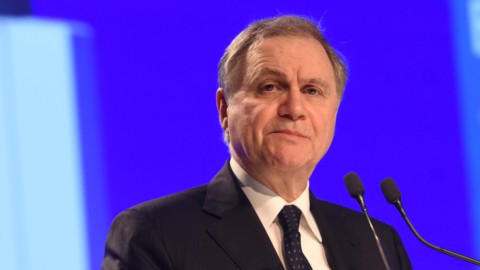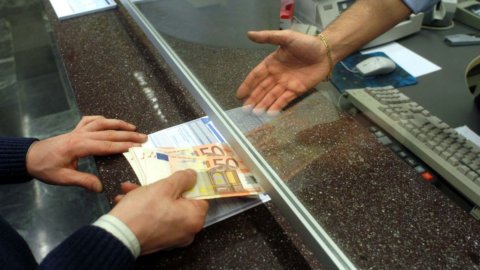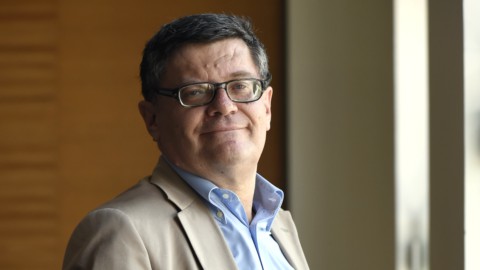The net profit of the company decreased by 1,8 billion compared to last year Bank of Italy which in the coming years could even go into the red due to the “ECB rate hike which resulted in an immediate increase in the cost of liabilities on the balance sheet”. The governor said so Ignazio Visco during its last assembly, an assembly that was also important for the history of the Institute in via Nazionale, which turns 130 this year.
“Today's is the last assembly I preside over as governor; next November I will leave the leadership of the Institute, which I entered in 1972”, Visco stated during his speech. Appointed on 1 November 2021, the governor underlined: "in the twelve intense years I spent at the top of the Bank, important changes have taken place in the exercise of the functions of the Institute. For his succession, he seems to be in pole position Fabio Panetta, former general manager of the Bank of Italy and since 2020 member of the Executive Committee of the European Central Bank.
The 2022 balance sheet of the Bank of Italy: profit drops to 2,1 billion, 3 billion to the state
The shareholders' meeting of the Bank of Italy approved the 2022 budget which closed with a "economic result still positive, albeit down on the previous year”. In 2022, in fact, via Nazionale recorded a net profit of 2,1 billion euros, down by 1,8 billion compared to 3,9 billion in 2021. The gross result of the bank was "significantly reduced" from 9,2 to 5,9 billion euros mainly due to the contraction of interest margin for 1,5 billion and more write-downs on securities valued at the market, especially in US dollars, for a further 1,5 billion”, reads the Via Nazionale balance sheet. Despite this, the dividend distributed to the shareholders was determined at 340 million, equal to 4,5% of the share capital. Furthermore, in 2022, the profit allocated to the state amounted to 1,676 billion, to which are added taxes for over 1,3 billion. In 2021, 6,8 billion from 2021 had ended up in the State coffers. Overall, however, in the last ten years, the cumulative profit recognized to the State by Bank of Italy amounts to 38,2 billionto which must be added 12,8 billion of accrual taxes.
Going forward with the data contained in the budget, in 2022 the amount of Italian government bonds held by Bank of Italy for monetary policy purposes amounted to 630 billion euro. The stock, according to the annual report, increased by 30 billion compared to the previous year. These titles fall under theassets of the Bank of Italy which at the end of 2022 amounted to 1.477 billion euros (-4% on 2021) and the main part "continues to be represented by securities purchased for monetary policy purposes” which at the end of the year amounted to 696 billion. The assets held for investment purposes they are equal to 147 billion, from 150 billion in 2021, of which 84% are public securities.
Visco: "Bankitalia towards red balance sheets, losses covered by accumulated funds"
In the coming years, the Bank of Italy, like the ECB and the other banks of the Eurosystem, "will find itself facing negative gross results, before profits gradually grow again” after the two-year period 2023-2024. This was stated by Governor Ignazio Visco, explaining that the red is due to the "rate hike ECB which led to an immediate increase in the cost of balance sheet liabilities, mainly represented by bank deposits and the TARGET debt balance, against which there was no corresponding increase in the return on monetary policy assets, less sensitive to the growth of interest rates as they mainly consist of fixed-rate securities with medium/long-term maturities. This asymmetry has a negative impact on the interest margin, which after the decrease in 2022 - predicts the governor - is destined to further decrease in the coming years". To deal with this situation, the "provision for general risks, fed this year with a provision of 2,5 billion, reaching 35,2 billion”.
The bank, states the report, has been able to set aside the necessary resources in recent years "to strengthen capital in the event of future losses" and the losses "that may arise from the implementation of monetary policy operations will in no way jeopardize the ability to pursue and maintain price stability".
“The international situation continues to be characterized by a deep uncertainty. Geopolitical tensions and the repercussions of Russia's aggression against Ukraine have led to a slowdown in global economic activity and contributed to the return of inflation”. In any case, it is about a momentary situation, assures the Governor: “We are carefully following the tensions underway on the markets. The euro area banking sector, thanks to the capital strengthening and other prudential safeguards introduced after the global financial crisis, extended to all banks in Europe, is well capitalised. In any case, where necessary, the Eurosystem is ready to intervene with all the tools available, in order to maintain the effectiveness of the monetary policy transmission mechanism and preserve financial stability, said Visco.
The Bank of Italy in the 12 years led by Visco
During his speech, the Governor summarized his 12 years at the top of the Bank of Italy, defining them as "intended" and speaking of the main changes experienced by via Nazionale during these years. In particular, he explains, “new tasks have been assigned to him, his responsibilities have increased; its European projection has significantly increased. The exchange of ideas and the sharing of decisions within the ECB, which have been the qualifying features of monetary policy after the birth of the euro, have also become so in the field of banking supervision with the establishment of the Single Supervisory Mechanism, since November 2014”. Visco claimed the strong integration that took place between the banking and insurance supervision and the ever-increasing development of the "Bank's functions in terms of protecting banking and insurance service customers, financial education, supervision of cash handlers, the fight against money laundering", also through the strengthening of the UIF, the Unit of financial information, to which the new Anti-Money Laundering Regulatory and Supervision Unit has also been added.
Changes have also been made to the structure of the bank, whose participants have risen from 60 to 173, with the majority of capital now held by non-bank entities. "The concentration of shares has therefore been resolved," the Governor finally underlined.





